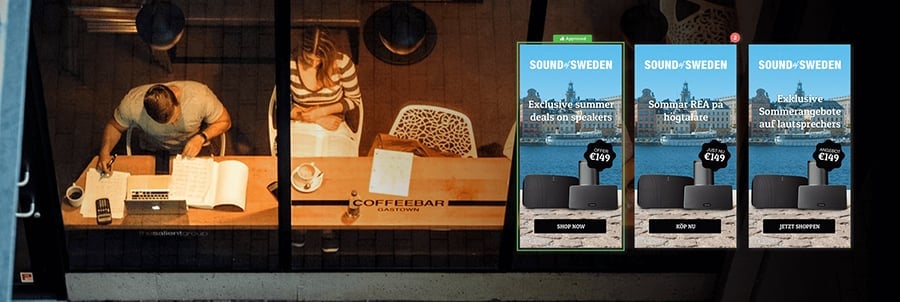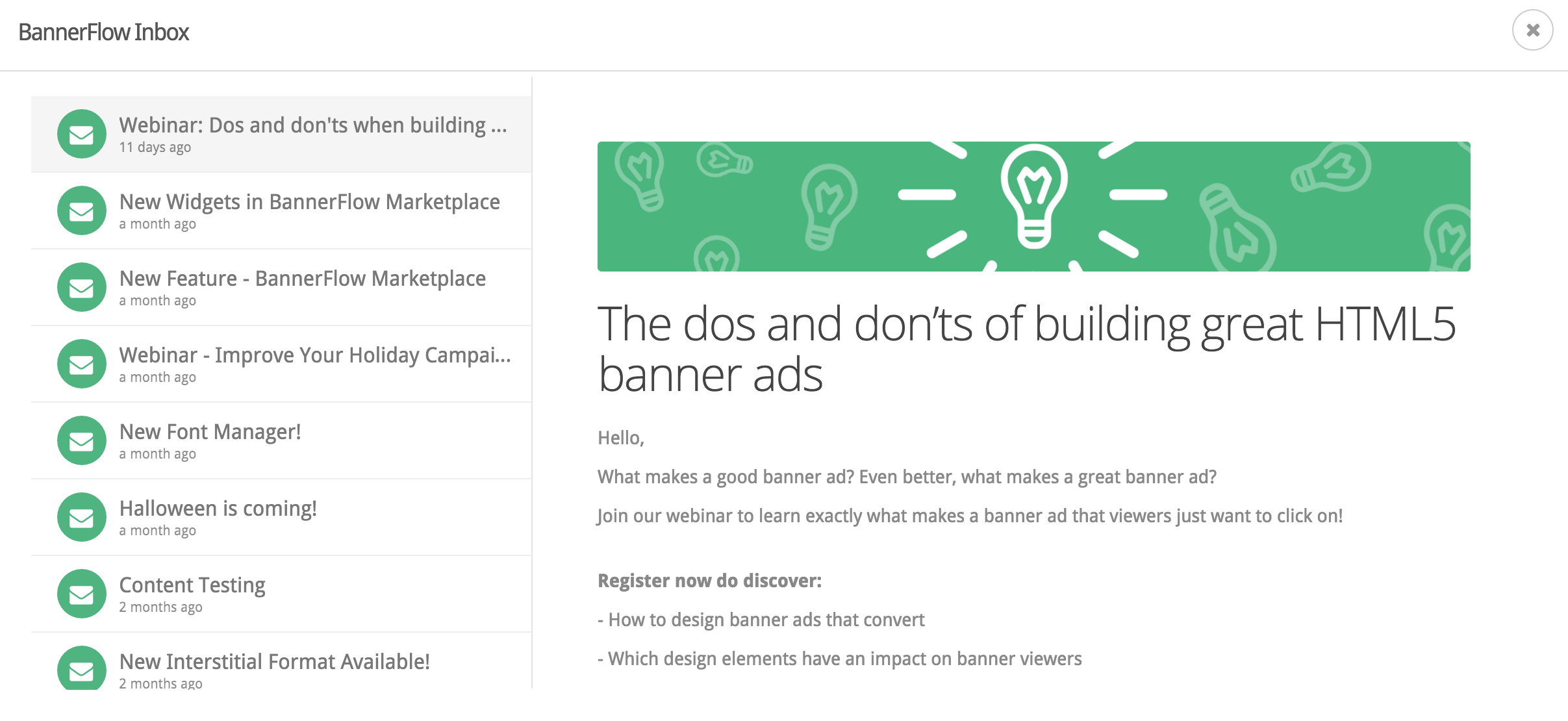
9 ways great translating can reward digital advertisers
Translating should be at the heart of digital advertising campaigns. For brands that work across markets or are looking to expand it cannot be overlooked. It offers benefits both immediate and long term.
And here’s why: worldwide digital advertising spend is predicted to grow from $239 billion in 2018 to $362 billion by 2022, according to the latest eMarketer figures. Which is great for those who produce and facilitate digital advertising.
However, for advertisers it offers a glimpse into an ever more competitive global market. Digital is set to expand across more and more markets – offering brands ever greater opportunities.
The ability to take advantage of this will be key.
Now we’re talkin’
In this blog, we’ll detail how a nuanced approach to digital marketing, which embraces translation, can make the most of this changing landscape. Plus, the pitfalls to avoid and overcome.
From digital display to outstream video, from desktop to mobile, translating your message into profit is easier than ever.
1. Auto-translate at your peril
Machine translation has come a long way. With Google Translate dominating as the tool of choice for amateur translators the world over. However, its use within digital advertising still has some distance to go.
For a start, machine translators are not entirely accurate.
Take the story about how Google Translate accidentally insulted flat Earth conspiracy theorists. When it turned the English phrase ‘I am a Flat Earther’ into French, the system was found to say: ‘Je suis un fou’. Rough translation: ‘I’m a crazy person.’ Which, while true, shows the limitations of using even one of the best tools available.
Imagine if your latest copy for a Spanish banner campaign was mistranslated? One, you would be an idiot for not checking with a Spanish speaker, but second, you’re potentially insulting a large portion of your brand’s customers.
Yet, it is worth noting machine translation will improve and grow. The global machine translation market is expected to reach a billion dollars by 2022. While Facebook is already rolling out automated translation for its messenger service.
Relying on it – right now – is a mistake.
A skilled human translator is the direction of travel for brands who do their homework. Until, that is a machine can understand context, and recognise cultural differences.
Takeaway: Automatic, machine translation is out, culture-sensitive localisation is in.
2. Trust the professionals
What is the only way to guarantee great translating? A professional. And yes, it may sound obvious but many brands fail to recognise this.
If your business is intent on making strides across markets you need to engage with language experts. It is crucial that you translate, or adapt all your digital marketing material correctly.
Which for some languages is no easy task – take German, for example. There are at least eight well known words that simply do not translate into English. Producing a campaign in New York, minus a German speaker, how are you ever going to know this?
Smart CMOs know that the key to a successful global digital strategy lies in understanding what makes different markets tick. Producing creative that taps into this is essential.
Takeaway: Invest in a decent translation team.
3. Maintain control across markets
Being able to oversee projects and maintain brand consistency can be a challenge for global campaigns. Meeting local requirements while retaining strategic control is a goal for all international brands. But why is this important when translating digital advertising?
Digital advertisers need to be able to tailor marketing material to local tastes and cultural nuances. Not only that, but they must walk the tight robe of brand identity as well. One way of achieving this is by managing digital marketing assets from one central editorial location.
Brands such as Bonnier Publications, and CMC Markets, work like this. They use cloud-based platforms to oversee worldwide in-house marketing teams and the localisation process. This means content, such as digital display ads, can be reused and localised effectively.
By doing this, production workflows are improved and complex translation processes are more efficient. Saving brands time and money. What’s more, some brands are going one stage further and adopting agile processes, which allows for even nimbler localisation workflows.
Consequently, if you are able to maintain control and consistency across markets you should see returns.
Takeaway: Use technology to oversee and control campaigns.
4. Set the tone
The 20th century philosopher Ludwig Wittgenstein once said, “if we spoke a different language, we would perceive a different world.” The same is true of digital advertising.
Clearly communicating your brands message from day one of a digital campaign sets the tone for success. It’s where good translating can earn you mega bucks. However, fail to do so and you instead create acute long term problems.
But how do you avoid this? Simple, do your research:
- Is your product name suitable? A little bit of cultural understanding goes a long way. Calling your new car model “the whore” or “small penis” in Spanish markets does not set the tone.
- Is your communication style appropriate? An informal tone may be perfect for your home market, but what works in one market may not work in another. For example, copy aimed at Swedish viewers may be inappropriate for the more formal Middle East. Be flexible when translating your campaigns.
- How does the native competition communicate? Understand why competitors communicate in the way that they do. This will help to position your brand and use local languages for maximum impact.
Takeaway: Research helps sets the tone of your message.
5. Adapt to different markets
Related to setting the tone is adaptation. When simply translating awesome copy is not enough to succeed in certain markets. Translation is always mandatory but knowing when to go that extra mile (or kilometre) is vital for global brands.
Take Japan for example. Noriyuki Matsuda, founder and CEO of software company Sourcenext, recommends to “look beyond translation services when seeking to tap the country’s $3 trillion consumer market.”
Writing in eMarketer he elaborates by explaining how in Japan, people like bright colours such as red, yellow and green – with tiny accompanying text. “When we bring US products over to Japan, we design them to be brighter, shrink the text size and include a lot more sales points for the product.” The lesson? Digital marketers need to be aware of when to radically alter their approach.
Translation is everything, but not translating well enough is a costly mistake.
Takeaway: Be open to adapting your brand.
6. Think multicultural, not just multilingual
For some countries setting the right tone and adapting digital advertising is the minimum! It’s not just about translating languages, it’s about people and their values too. Digital advertisers have to think multicultural, and localise.
Nowhere is this better exemplified than in China. According to Kantar Consulting’s North Asia managing partner Bernhard Wessels. “The brands that succeed are those that position themselves as being in-touch with China. But are also modern, evolving, and have a sense of western credibility”. A complicated line for brands to walk.
Culture-sensitive localisation is required. Moreover, true localisation takes into account cultural values that vary across regions. On a basic level this is emphasising the availability of fine French wine at a hotel chain to French customers, but talking about the dining experience in a Muslim country where the drinking of alcohol is discouraged.
Or it could be even more complicated. For example, India is home to 1600 dialects, and 22 officially recognised languages. Many advertisers assume English is the online lingua franca of choice but Indian language internet users number 234 million. Far more than the 175 million English language internet users. Imagine not localising your digital advertising? Competitors will.
If you’re serious about targeting a particular market, get the cultural values right too.
Takeaway: Go beyond language and think culturally.
7. Use a creative management platform for translating
Using translation management tools is another way to work efficiently across markets. For digital display advertisers, premium creative management platforms (CMPs) offer unparalleled translation management capability. Moreover, they provide banner advertisers with the ability to quickly create copy and ad variations.
How you ask? Translators are able to see text in-banner – rather than out of context and in a chaotic excel sheet.
This means campaigns can reach further. Barriers are removed, and the translation process is more collaborative. As a result, designers receive instant feedback, and messy workflows, which could take weeks – instead take minutes.
Building, truly relevant campaigns for, multiple markets, is no longer a challenge.
In fact, CMPs allow all types of brands, from multinationals, to the smallest in-house team, to design and publish efficiently. But it’s when easy translation is combined with other CMP features that the magic happens. For example, with real-time publishing, live banner ads across many markets are optimisable from one location.
Takeaway: Translation management is more important than you realise.
8. Localisation via personalisation
Translating your digital advertising and localising shouldn’t be complicated. In fact, many brands are already using similar approaches within established markets. Producing hyper-relevant ad campaigns, required for strategies such as programmatic creative.
This is another benefit of using a CMP, such as Bannerflow – it is designed for the mass-production of messages needed for such strategies. According to Bannerflow Co-founder, Daniel Jacobsson this provides extra translating benefits. “Our customers work in multiple markets and need localised messages.” Digital display advertisers are therefore able to localise via personalisation.
Meaning that on a worldwide scale they can try out new messages, and tailor ads to target groups within markets, even specific geographic places. There is even the opportunity for dynamic creative campaigns across multiple markets.
Combined with programmatic advertising this enables cost-effective localisation.
Takeaway: Produce hyper-relevant advertising for multiple markets
7. Use data to improve your translating
Inevitably digital advertisers are in prime position to benefit from using data for better translating. For display advertisers that use a CMP there are yet more benefits: the ability to produce dynamic data fed banners. Plus, the ability to optimise and refine localised ads via analytics.
Using analytics, effective A/B testing is built-in into the lifecycle of global market campaigns. While tools such as click heatmaps show how ads perform across markets.
Combine this with working with translators via cloud-based platforms, and these insights can become immediate actions. Optimisation and the use of real-time data gives brands an edge when digitally advertising on a global scale.
Takeaway: Optimise and use data test your translations.
Conclusion
For brands wanting to work across markets, translating needs to be high on the agenda. Failure to do so has the potential for embarrassment, or worse. Just ask HSBC which saw its “Assume Nothing” campaign mistranslated into “Do Nothing” in some territories.
Needless to say, that was not the intended message!
Finally, the lesson (which needs no translation) is to invest the time, effort, and budget into translating. Show respect, and sound judgment, by treating each market with the same care and attention your customers expect. Do this and you will reap the rewards.
Need to translate your display campaigns across markets? Then find out more about the Bannerflow CMP and how it makes translation management easier than ever.
Share this article






